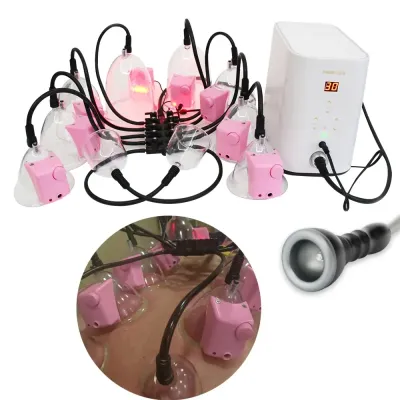
Why does stubble remain after laser hair removal?
2025-10-01 15:30
Whether it's on the face, underarms, legs, or even the bikini line, more and more people are turning to laser hair removal for long-term hair removal. However, some users find that even after completing a laser hair removal treatment, fine "stubble" still appears, and they may mistakenly believe that the treatment failed.
In reality, this phenomenon is not uncommon, and it doesn't necessarily indicate that laser hair removal is ineffective. Instead, it's caused by a combination of physiological mechanisms and device technology.
This article will systematically analyze the question of "Why does stubble remain after laser hair removal" from a scientific, medical, and device perspective. It will provide a comprehensive understanding of the principles, limitations, and effectiveness evaluation methods of laser hair removal devices, avoiding misunderstandings and unnecessary concerns.
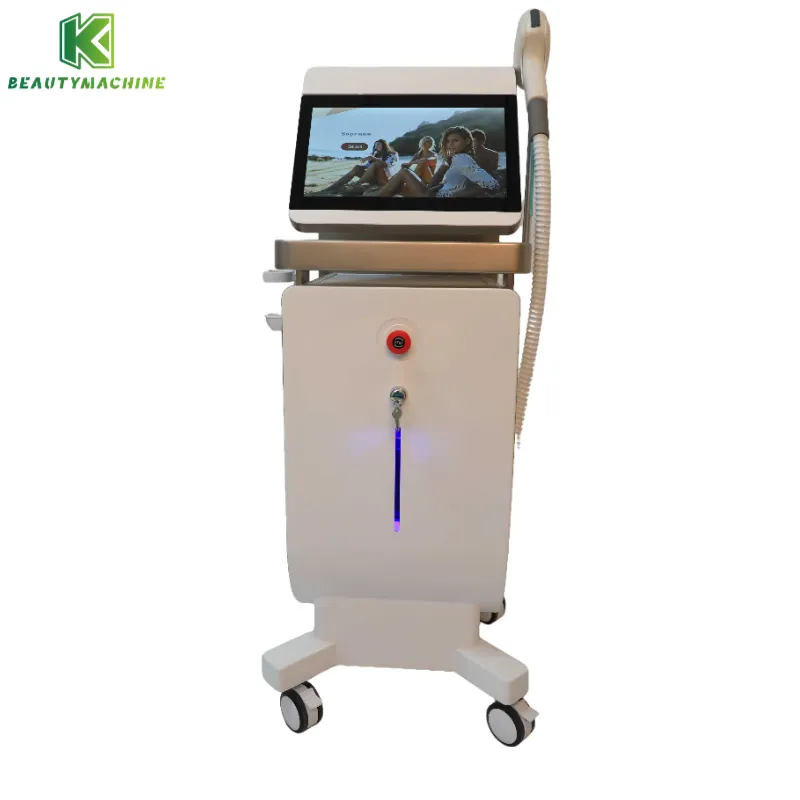
What is stubble? Why do you still see it after laser hair removal?
"Stubble" generally refers to the short hair tips remaining near the opening of the hair follicle after hair is cut or partially grown. It appears as tiny, dense black dots or prickly, short hairs and is the most obvious source of discomfort for many people after hair removal.
There are two common types of stubble:
• Remaining hair after hair loss: Parts of hair are not completely destroyed or removed, leaving a "stubble-like" visual residue on the skin's surface.
• Initial stage of newly grown hair after hair removal: Hair follicles are not completely inactivated, and new follicles, in a state of atrophy or recovery, are regrowing short hairs.
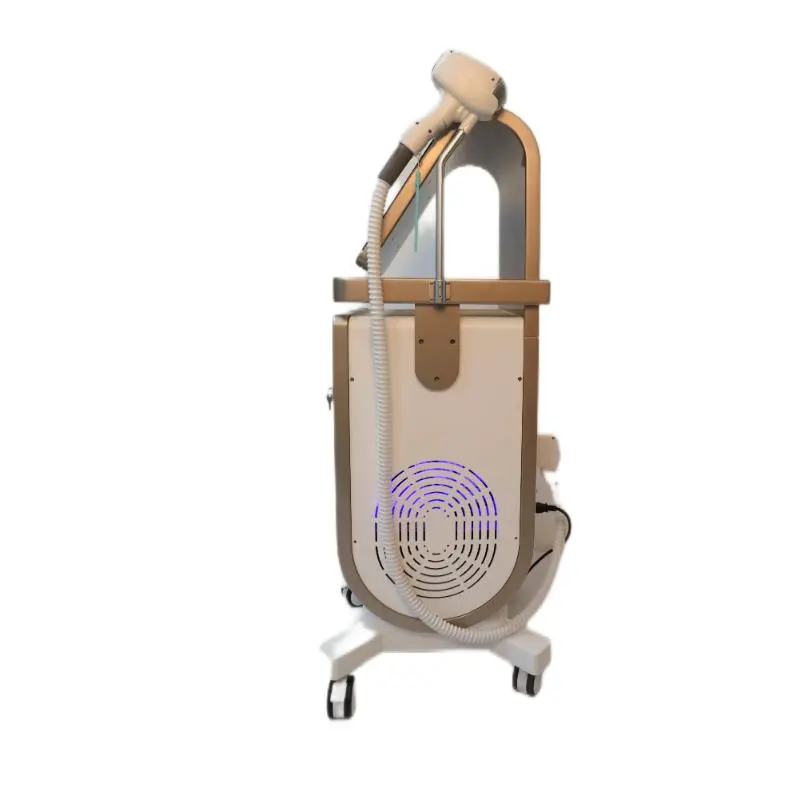
How does a laser hair removal machine work?
Before understanding the causes of stubble, it is important to first understand the working mechanism of laser hair removal.
1. Selective Photothermolysis
Laser hair removal machines use laser light of a specific wavelength (such as 808nm). The melanin in the hair follicles absorbs the laser energy and converts it into heat, generating localized high temperatures that damage the hair follicle structure and inhibit hair regrowth.
2. Laser hair removal machines focus their energy on the hair follicle, not the hair on the surface
Laser hair removal machines do not directly "burn" the hair on the skin's surface; instead, they use heat energy to target the hair follicles. Therefore, even if laser hair removal treatment is effective, remnants of "destroyed" hair shafts may remain on the surface, forming the basis for stubble.
The core cause of stubble: the unpredictable hair growth cycle
The human hair growth cycle is divided into three phases:
• Anagen: Hair follicles are active and hair grows rapidly, making it the most effective phase for laser hair removal.
• Catagen: Hair follicles begin to shrink, melanin production decreases, and hair becomes less sensitive to laser treatment.
• Telogen: Hair falls out, new follicles form, and hair is completely unresponsive to laser treatment.
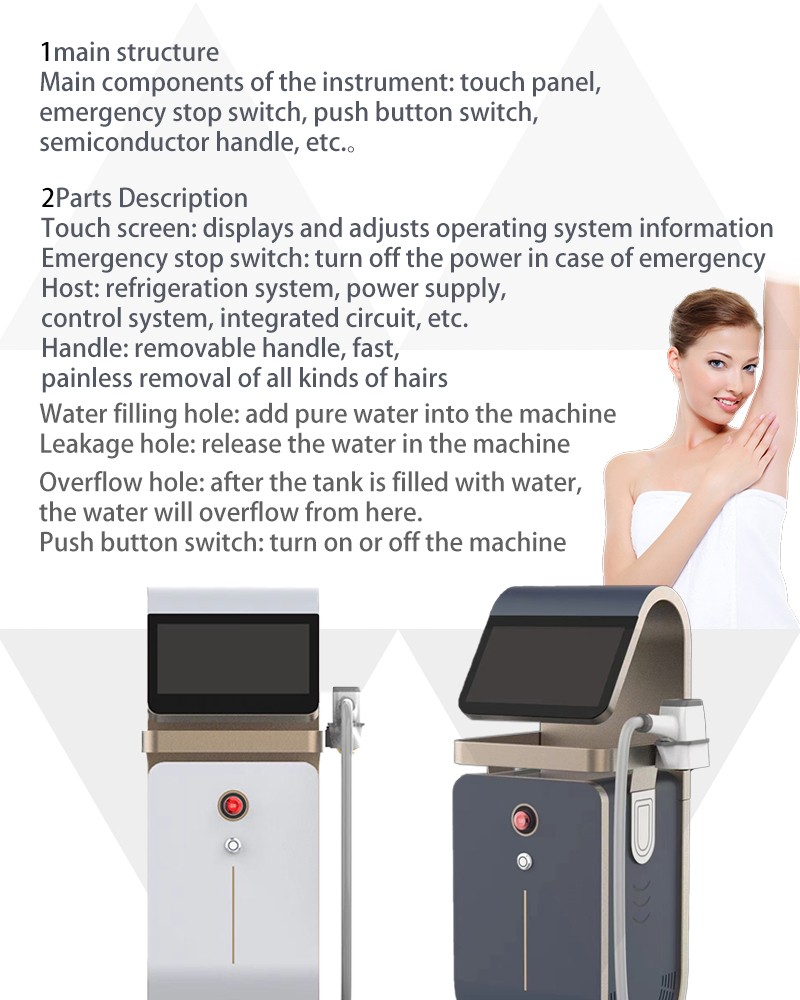
The key issue is that laser hair removal machines only target follicles in the anagen phase
A single laser treatment destroys only approximately 15-20% of the follicles. The remaining follicles in the non-anagen phase don't absorb enough heat to remain intact, so some follicles can continue to grow after treatment. New hair initially appears as fine, short "stubble."
Different laser hair removal device types affect stubble
Common laser hair removal devices currently include:
• 755nm Alexandrite laser: Provides shallow penetration, suitable for light skin and fine hair.
• 808nm diode laser (808 laser hair removal device): Widely used, offers a balanced combination of penetration and absorption, suitable for most individuals.
• 1064nm Nd:YAG laser: Provides deep penetration, suitable for darker skin.
Why does the 808 laser hair removal device still leave stubble?
Although the 808 laser hair removal device is the most commonly used and effective hair removal device, its mechanism of action means that it only destroys hair follicles during the growth phase. The presence of stubble is not a problem with the device, but a natural phenomenon caused by the hair's physiological cycle.
Insufficient treatments and technical manipulation can affect stubble retention
1. Insufficient treatment cycles
Due to uneven hair distribution and significant individual differences, achieving optimal results with laser hair removal generally requires 6-8 treatments. If only one or two treatments are performed, not all anagen follicles have been destroyed, making it easy to see "stubble."
2. Improper laser hair removal machine parameter settings
A professional physician should appropriately set parameters such as laser energy density and pulse width based on skin tone, hair color, and area of the hair. Too low an energy level will not completely destroy the hair follicles, leaving them as "stubble."
The "stubble" after laser treatment is not permanent and should not be confused with "regeneration
Many people mistakenly believe that stubble means hair has "regrowth." In reality, these short hairs have three possible causes:
• Dead hair shafts that have not yet fallen out: Although the laser destroyed the hair follicles, the hair shafts were not promptly removed from the skin and will naturally fall out over several days.
• Non-anagen follicles re-entering the anagen phase: Hair follicles not previously damaged by the laser restart their growth cycle and produce new hair.
• Some superficial, incompletely destroyed follicles resume growth.
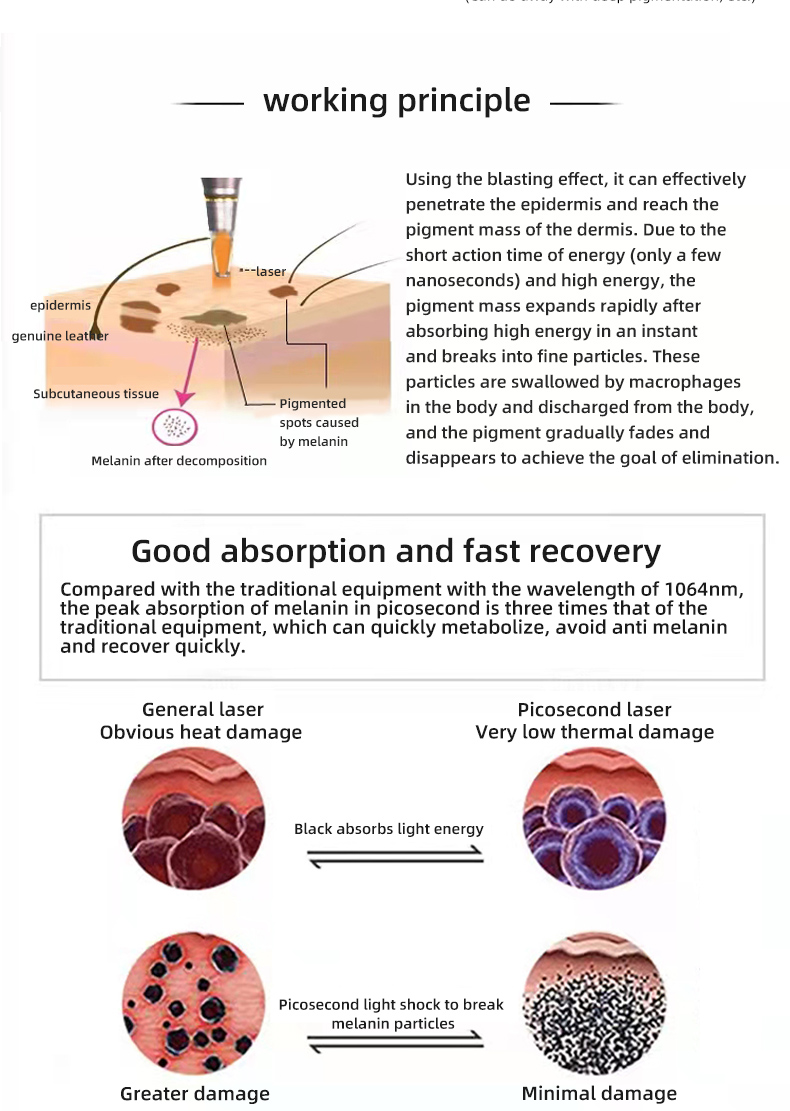
Laser hair removal is not a one-size-fits-all solution
This is not a technical flaw; it is a phased process determined by the physiological characteristics of hair. Laser hair removal is just one method of controlling hair growth; it doesn't guarantee permanent hairlessness after just one or two treatments.
Hair Density and Stubble Retention in Different Areas:
• Facial hair (such as the beard) is denser and has more active follicles, making stubble more likely to form:
• Men's facial hair grows faster and has coarse, hard hair shafts;
• Women's thin hair on the lips or jawline responds less quickly to lasers due to lower melanin concentrations;
• Sensitive skin areas may experience limited effectiveness due to lower energy settings.
It is recommended to adjust the device parameters and treatment duration based on the area of interest. With professional operation and a well-planned treatment schedule, even if stubble does appear, it can be significantly reduced after several treatments, ultimately achieving a smoother appearance.
Improper post-laser hair removal care can also exacerbate the appearance of stubble
If laser hair removal is not properly maintained, it can easily lead to keratin accumulation and clogged hair follicles, exacerbating the appearance of stubble. Common care mistakes include:
• Immediate shaving: This irritates the skin and causes more noticeable short stubble;
• Frequent hot showers or saunas: This exacerbates pore inflammation;
• Not using sunscreen: UV rays can dry out or darken the skin, making stubble more noticeable.
Correct care recommendations:
• Avoid heat and strong sunlight within 72 hours after treatment;
• Use pore-soothing skincare products (such as aloe vera gel);
• Refrain from manually plucking any remaining hair; allow it to fall naturally.
The above analysis clearly demonstrates that:
The appearance of stubble after laser hair removal is a normal transitional phenomenon and does not directly negate the effectiveness of the laser hair removal device.
The hair growth cycle, laser wavelength penetration depth, hair follicle responsiveness, number of treatments, and care habits are all key factors influencing the development of stubble. Modern mainstream laser hair removal devices, such as the 808 laser hair removal device, are highly targeted and safe. The root cause of stubble remains hair physiology, not a defect in the device.
Do you provide OEM/ODM services for beauty and home appliances?
Yes, we offer professional OEM and ODM services for clients seeking customized beauty equipment or home appliances. From packaging design to function integration, KuoHai supports your branding journey.
Whether you're launching a new brand or scaling your existing product line, our factory in China delivers cost-effective manufacturing and wholesale support. Contact us for quotes and sample production to get started with your purchasing plan.
Get the latest price? We'll respond as soon as possible(within 12 hours)
